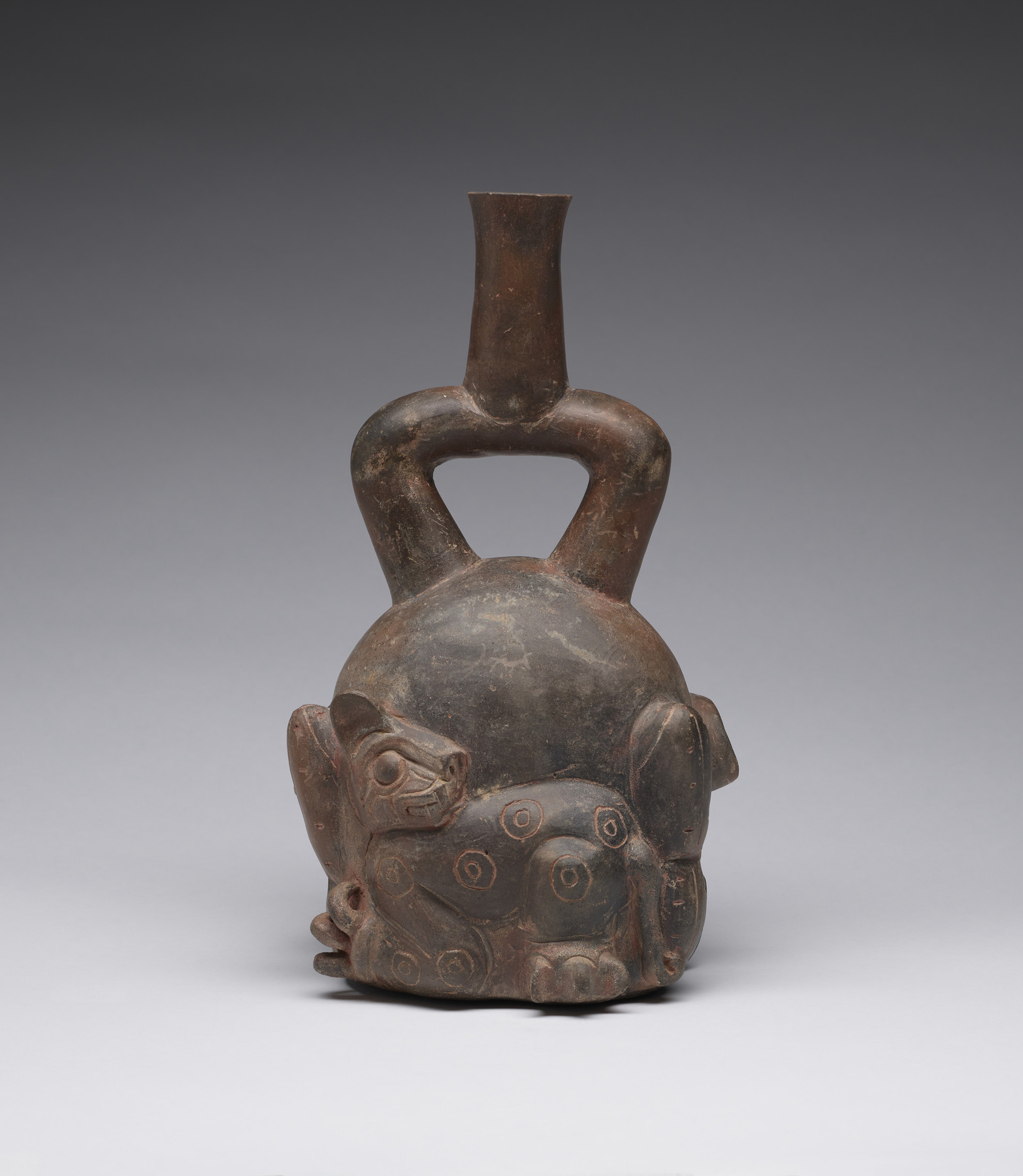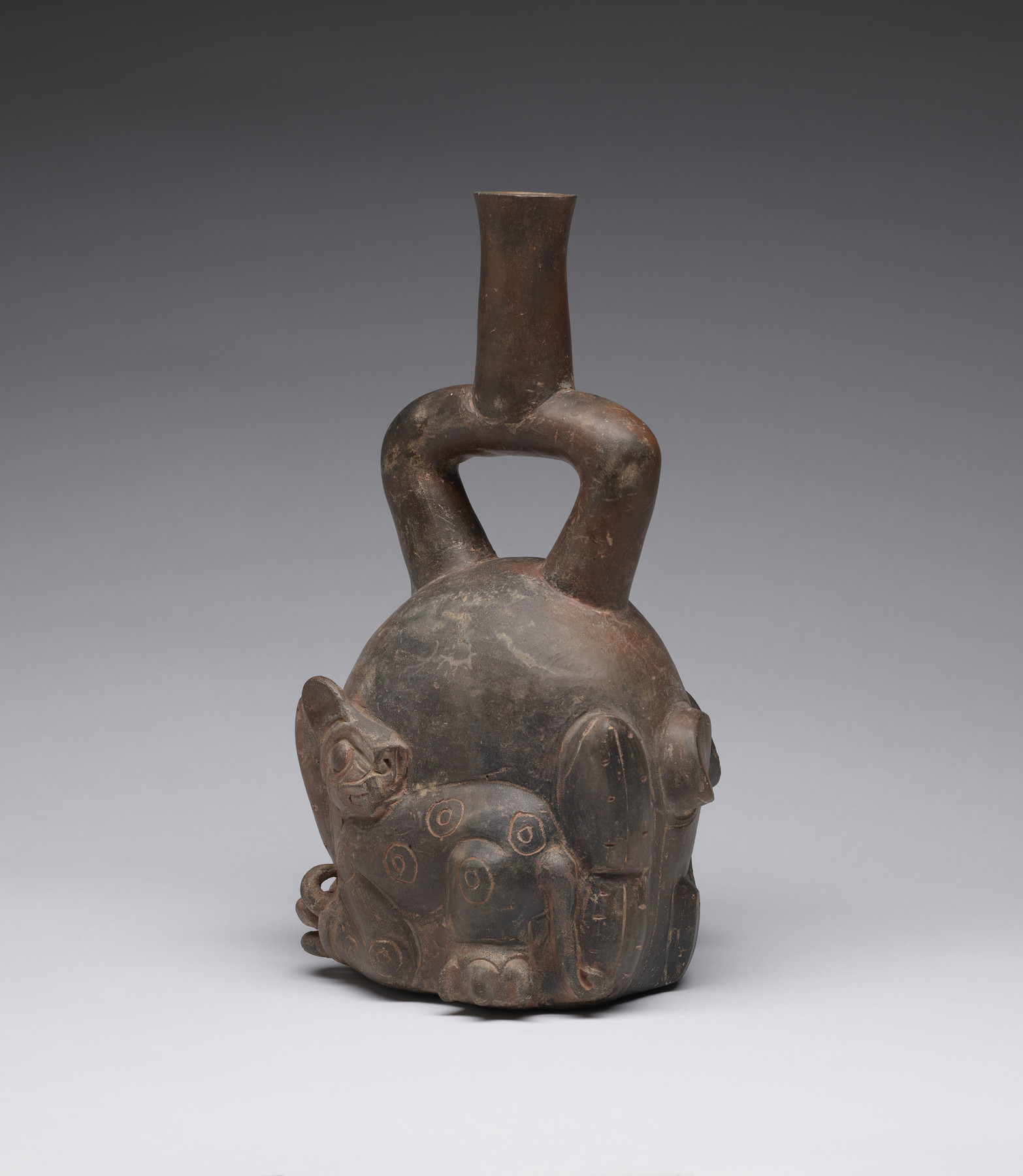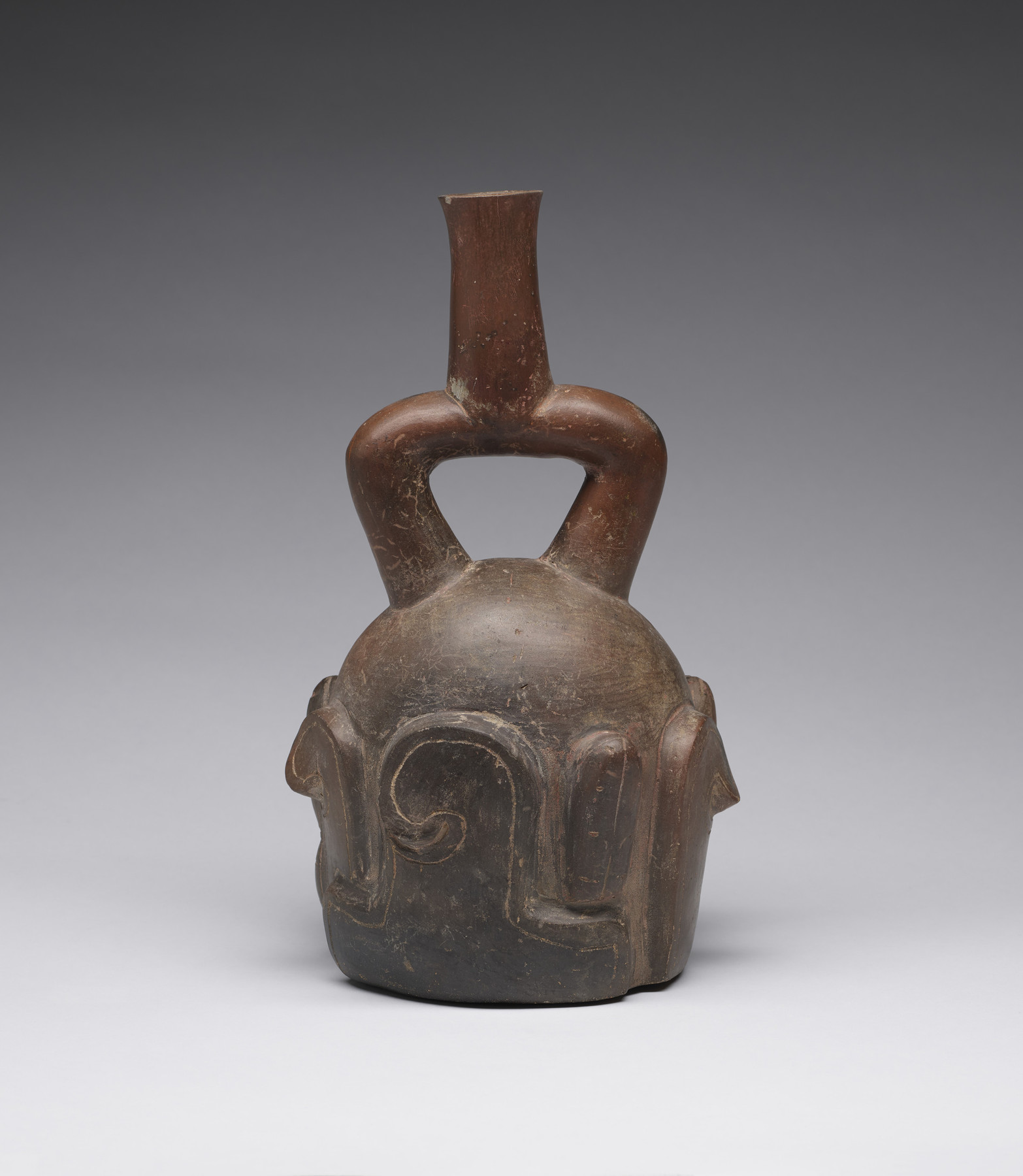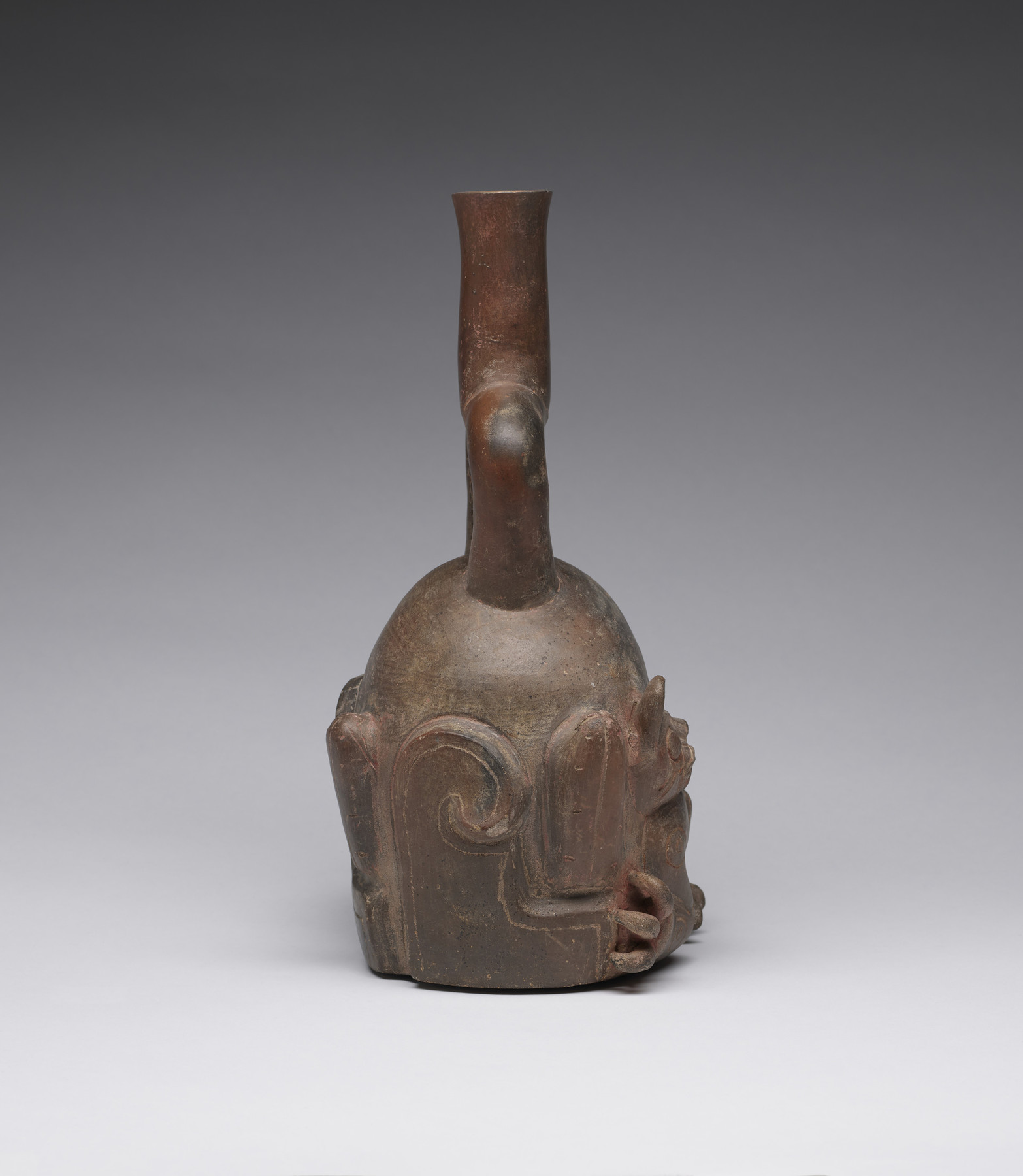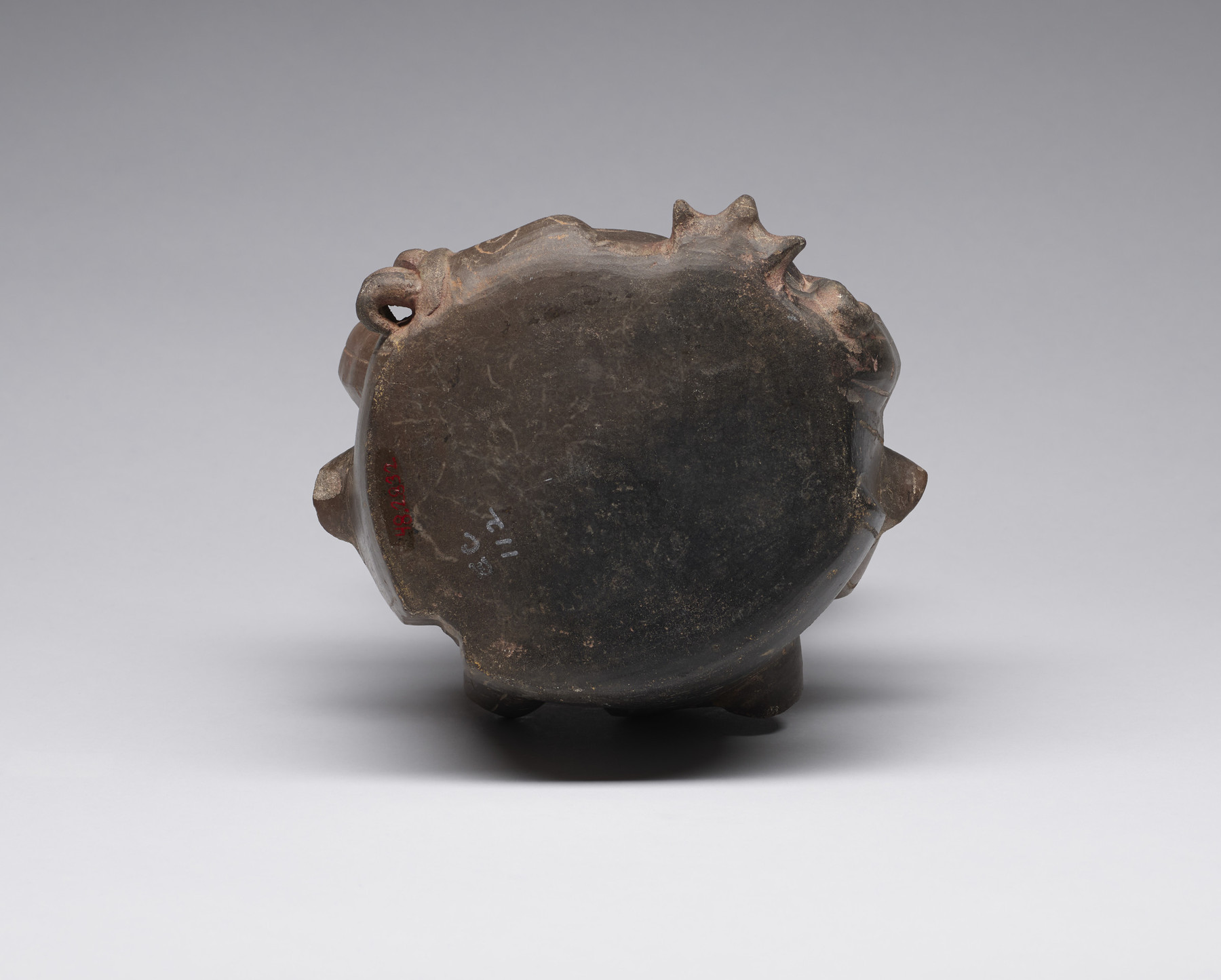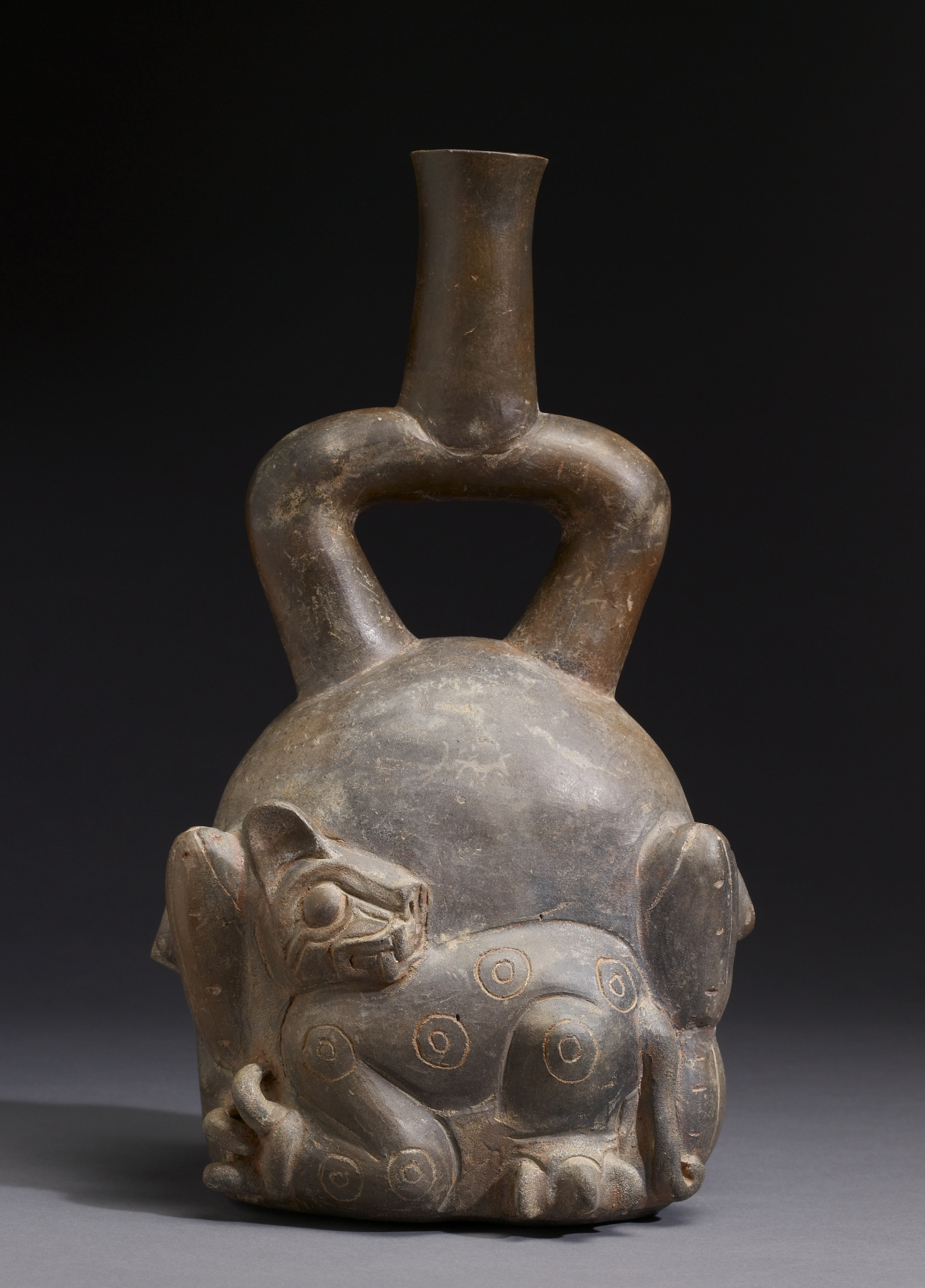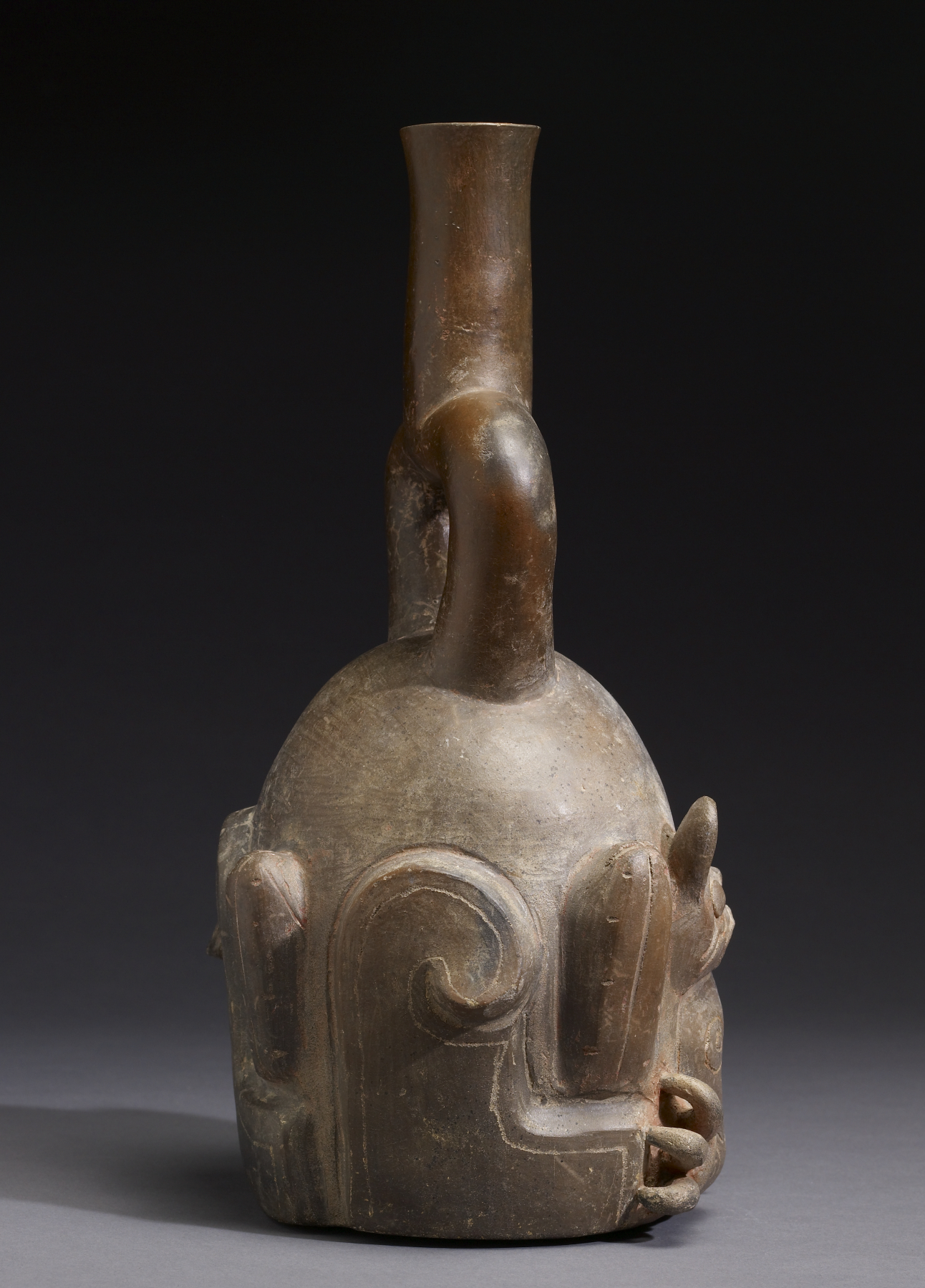Feline-and-Cactus Stirrup Vessel
(Ancient Americas )
This “stirrup-spout” vessel shows a jaguar modeled in relief on one side of the surface of the bottle. The artist carefully represented the spots of its coat and depicted sharp claws with loving care. The other side of the vessel depicts the jaguar’s environment. It is comprised of curling wave forms, perhaps representing the nearby Pacific Ocean, and several examples of cactus. This probably shows the San Pedro cactus, whose branches contain a hallucinogenic substance. The cactus is used in traditional medicine and religious ritual to this day. The sacredness or ritual power of the vessel is suggested by the fact that parts of it seem to have been rubbed in ancient times with the red pigment known as cinnabar, a substance that was used in consecration rituals.
The “stirrup spout” was one of the most common vessel forms in pre-Columbian Peru and the Andean area. A short spout at the top is attached to two tubes which join with the vessel itself. The form is reminiscent of a stirrup for horseback riding, hence the name. The resulting container was beautiful and versatile, since the main vessel could be shaped into many different forms, with a surface that was either carefully polished or highly textured. These vessels were also practical: in the extremely dry deserts of Peru, such a narrow opening prevented evaporation of the liquid held within. The complex shape of the neck also meant that it was easy to carry: two such vessels could be tied to the ends of a cord, to be slung over a person’s shoulder or a llama’s back. Large numbers of vessels like these have been found in burials of elites on the north Coast of Peru beginning about 1800 BCE.
Chavín is considered the mother civilization of the South-American Andes, and is often compared to the Olmec of Mexico in that both cultures established many patterns of art, architecture, and culture by 1000 BC, that prevailed until the arrival of Europeans in the 16th century. Stirrup-spout vessels like this example were made by the Chavín (and many other South-American peoples) using a number of molds, with details modeled by hand. Although we do not know what was stored in these vessels, suggestions include corn beer or "chicha," a native Andean fermented beverage.
Chavín stirrup-spout vessels vary in both their architecture (spout-width, shape, direction) and type of decoration. Many combine incised design with modeled form, as in this example. Felines of the type depicted on this vessel were important in Chavín art and culture because they were associated with the ruling houses. In nature such animals are often excellent hunters who occupy the top of the food chain, qualities also valued in human rulers. Felines, like jaguars and pumas, were also thought to enjoy great spiritual force; shamans were believed to transform into such creatures.
Provenance
Provenance (from the French provenir, 'to come from/forth') is the chronology of the ownership, custody, or location of a historical object. Learn more about provenance at the Walters.
Mr. Alexis Forrester, London, before the late 1970s [mode of acquisition unknown]; Economos Works of Art, Santa Fe, New Mexico [date and mode of acquisition unknown]; Private collection, 1991, by purchase; Walters Art Museum, 2009, by gift.
Exhibitions
| 2019-2021 | Excursions through the Collection: Portraiture, Adornment, and the Natural World. |
Geographies
Peru (Place of Origin)
Measurements
H: 11 5/8 × W: 6 7/8 × D: 5 3/4 in. (29.5 × 17.5 × 14.6 cm)
Credit Line
Anonymous gift, 2009
Location in Museum
Not on view
Accession Number
In libraries, galleries, museums, and archives, an accession number is a unique identifier assigned to each object in the collection.
In libraries, galleries, museums, and archives, an accession number is a unique identifier assigned to each object in the collection.
48.2832

